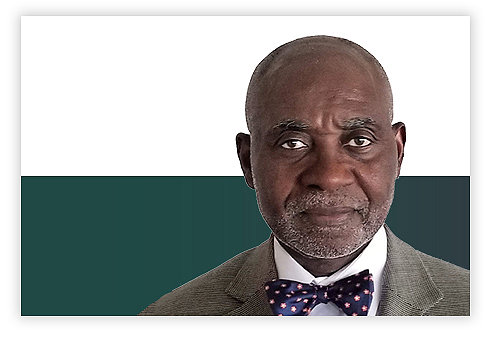Patient impact

A young dancer with scoliosis faces a bright future after instrumentation with Stryker technology thanks to two surgical pioneers

Dr. Laurel Blakemore
Pediatric Specialists of Virginia


“The first time I danced [again] felt amazing,”
- Destiney Jackson
Life can get complicated when a bright, active teenager, who’s an accomplished and passionate dancer, must face the prospects of complex spinal surgery to address a worsening case of scoliosis, or curvature of the spine. It’s a procedure that will have an impact on the rest of her life.
Seventeen-year-old Destiney Jackson, from Gainesville, Florida, has been dancing since she was three. “It’s always been a big part of my life,” she says with a winning smile. “It’s the way I express myself; I love it.”
A good student and a member of her high school’s competitive dance team, Destiney endured long practices and began to feel unusually sore and uncomfortable. “It started affecting my confidence, and I was afraid that my appearance was crooked,” she says. She realized her condition was getting worse.
The path forward
That’s where Dr. Laurel Blakemore comes in, a renowned orthopaedic surgeon with expertise in pediatric scoliosis and other spinal deformities — a pioneering role model and advocate for women in the field. While she discussed each treatment’s pros and cons with Destiney and her parents, it became clear to all that surgery was the best option.
“Left untreated, scoliosis can seriously impact the quality of your life and your longevity,” says Dr. Blakemore, who was Chief of Pediatric Orthopaedics at the University of Florida College of Medicine at the time and is now CEO of Pediatric Specialists of Virginia. “As the curvature worsens, people can end up in pain, with shortness of breath and a decrease of lung capacity,” she adds.
“Making the decision for surgery was nerve-wracking,” says Destiney’s father, Kevin, “but we realized we had to go ahead.” Her mother, Patrice, says the family focused on staying positive. Destiney agreed, saying, “We knew we were in good hands.”
“Our objective was to stop Destiney’s curve from getting bigger and correct the existing curve as much as possible,” Dr. Blakemore explains. During surgery, Dr. Blakemore used Stryker’s Mesa 2 Deformity Spinal System, which, she says, is “the first multiple reduction tool in one system1 and, I believe, very effective and versatile. It’s also small and lightweight.”
The journey to recovery
“Coming out of surgery, I was loopy but happy it was over,” Destiney explains. When she first stood up, she had grown one-and-a-half inches. Because the surgery went so well and she was otherwise healthy, Destiney was discharged after only two days, ready to begin recovery.
“The first time I danced [again] felt amazing,” Destiney says, beaming. “It was great to get back to normal, and I soon realized I could do things like cartwheels and rolls without pain. I even started wearing high heels after a month.”
Now Destiney can look to her future with optimism. “I’m still deciding on college, and I’m interested in graphic design or computer science — I’m not sure yet,” she says. “But dancing will always be a part of my life.”

Building the tools to treat scoliosis
Half a world away from Florida, in Ghana, lives renowned orthopaedic surgeon Nana Prof Oheneba Boachie-Adjei Woahene II, who helped create the Mesa 2 Deformity Spinal System used in complex surgeries like Destiney’s. Dr. Boachie-Adjei is the founder of the Foundation of Orthopedics and Complex Spine (FOCOS) and FOCOS Orthopedic Hospital in Accra. He is a member of our Spine division’s scientific board.
“The technology we developed for Mesa 2 is simple and versatile and designed to address difficult maneuvers for complex spinal pathologies — replacing what we used to do with wires,” he says.
A former professor at the Weill Cornell Medical College and Chief of Scoliosis at the Hospital for Special Surgery, both in New York, Dr. Boachie-Adjei founded FOCOS as a medical mission. The goal: to make quality orthopaedic and spine care possible, especially for the poor, vulnerable and underserved populations across Ghana and the West African sub-region. Opened in 2012, the 70-bed state-of-the-art orthopaedic hospital treats some 300–400 people a year, about half getting care for free.
In 2020, in addition to the countless professional awards he has received, Professor Boachie-Adjei was named the "essential chief" of the Asantehene, King of the Ashanti kingdom, for his dedication, commitment and service.

Nana Prof Oheneba Boachie-Adjei Woahene II
Foundation of Orthopedics and Complex Spine (FOCOS)

1 MES2DF-ST-1_23395 Mesa 2 Deformity Surgical Technique
In accordance with the labeling for the Stryker’s Mesa 2 Deformity Spinal System, patient selection and compliance is extremely important. The patient must be made aware of the limitations of the implant and that physical activity and load bearing have been implicated in premature loosening, bending or fracture of internal fixation devices. The patient should understand that a metallic implant is not as strong as a normal, healthy bone and will fracture under normal load bearing in the absence of complete bone healing. An active, debilitated or uncooperative patient who cannot properly restrict activities may be at particular risk during postoperative rehabilitation.
All surgery carries risk. See your orthopaedic surgeon to discuss your potential benefits and risks. Not all patients will have the same post-operative recovery and activity level. Individual results vary.
Drs. Boachie-Adjei and Blakemore are paid consultants of Stryker. The opinions expressed by Drs. Boachie-Adjei and Blakemore are those of Drs. Boachie-Adjei and Blakemore and not necessarily those of Stryker. Individual experiences may vary.
